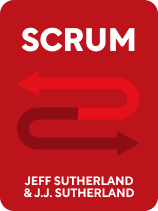

This article is an excerpt from the Shortform book guide to "Scrum" by Jeff Sutherland. Shortform has the world's best summaries and analyses of books you should be reading.
Like this article? Sign up for a free trial here .
Looking to understand Jeff Sutherland’s book Scrum better? How can these Scrum exercises help your team become more efficient?
According to software developer and management expert Jeff Sutherland, too much time is spent planning, too much energy is wasted on unimportant tasks, and not enough emphasis is placed on flexibility. That’s why Sutherland created the Scrum Method as a more efficient way to develop products.
Here are five Scrum exercises to further your understanding of the Scrum method.
Scrum Book Exercises
The way the business world operates, according to software developer and management expert Jeff Sutherland, is fundamentally flawed. In Scrum: The Art of Doing Twice the Work in Half the Time, he explains the Scrum framework, which he positions as a better time-management system than the traditional top-down approach. By using the carefully structured yet open-ended Scrum framework, a company, or any project team, can become much more efficient and productive.
Here are some Scrum exercises inspired by Sutherland’s book.
Exercise 1: Examine Your Experience With the Waterfall Method
- We’ve all probably used the Waterfall method at some point in our lives. As Sutherland says, it’s an extremely common strategy that has been used for decades. How well has the Waterfall method worked in your experience?
- Think of a time when you used the Waterfall Method, or something similar, to tackle a project. This could just be a simple project you did yourself or something you did with a team. When planning, did you include every task you needed to complete? Did you estimate how long each would take? How long did the planning process take?
- Now think of the process of putting the plan into action. Did everything go according to plan? Did the project take more or less time than you expected? What things changed during the process? Which tasks were added and which were eliminated?
- Looking back on the project, how would you have done things differently? Do you think extensive planning saved or increased time spent on the project?
Exercise 2: Reflect on Your Teamwork
Most of us use teamwork almost every day, whether it be at school, work, or home. Sutherland advises that team members should be allowed the freedom to choose their assignments and direct their actions and that teams should be kept small—no more than nine members. Reflect on some experiences you’ve had working with others.
- Think of a team project you had to complete in which you weren’t allowed much freedom. Now think of another team project in which you and the other team members had more say in how to complete it. Which of these was more fun, challenging, and effective? Do you think a team can have too much freedom?
- Have you ever worked on a team with over ten members? If so, how did it go? Was there a lack of communication amongst the team? Did you ever feel out of the loop? Did any in-groups form in which you felt left out?
Exercise 3: Make a Task List
See how much writing down your daily tasks can help your productivity. Then think about how using a task list changes when in a group.
- Make a list of the things you need to do tomorrow and then order them by importance.
- Now look over the list. Has simply writing the tasks down helped clarify what is most important? Do you think you will get more or less done if you make a list like this every day?
- How do you think making a personal task list differs from making a list for a team? Will it be more or less helpful? Why do you think so?
Exercise 4: Demonstrate Your Work
Use this exercise to think about how demonstrating can change the way you work.
- Describe a time you had to demonstrate something to a group of people, whether it be a school project, work presentation, or just a painting in a local art gallery.
- How did knowing other people were going to see your work change the way you prepared? Were you more or less motivated? Why do you think that is?
Exercise 5: Would You Rather Be Happy or Successful?
People generally think success leads to happiness, but Sutherland argues this isn’t necessarily true. Think deeply about what makes you happy.
- Based on your personal experience, what is the relationship between happiness and success? (Do you feel like you’re more successful when you’re happy, and/or that you’re happier when you’re successful? Does the answer to this depend on your definition of happiness? Do you feel like you get less done when you’re going through a rough time or in a bad mood?)

———End of Preview———
Like what you just read? Read the rest of the world's best book summary and analysis of Jeff Sutherland's "Scrum" at Shortform .
Here's what you'll find in our full Scrum summary :
- Why the "Waterfall Method" leads to inefficiency and wasted money
- An explanation of the Scrum method and details on how to implement it
- How to use Sprints to get more work done






